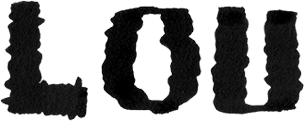Reflections on ‘Process’ Minimal Ethics for the Anthropocene.
‘The distinction between process and entity is therefore a heuristic, a conceptual device that helps us grasp the world and respond to it, while at the same time moving in it and being moved by it… Taking on the role of an injunction, it calls on us humans to respond to the movement that carries us through the world.’ (Zylinska, 2014, 42)
The concept of process has stuck with me from the work carried out for MED9032M Human and Inhuman in the 21st Century.
In this chapter Joanna Zylinska discusses the world as an unstable ontology whereby changes to this ontology are needed for the world to become, in a movement akin to evolution or the process/state of being coming about in time and space. Becoming here is described as the ‘becoming of the matter of the world’ (Zylinska, 2014, 37), or the world-in-itself and in essence the both physical and philosophical at its very basis of being, and the ‘becoming of the matter of the world’ (Zylinska, 2014, 37), or that which inhabits it. Matter and material with both their distinctions and their interplay are vital aspects when considering the notion of process.
Change therefore comes from disrupting/cutting the process, from disrupting/cutting the flow of life to strip away the deceptions of reality in order to stabilise life to allow us to see the world in a distinct series of objects and states, ‘disruptions to the process that, first, allow us to see the process as a process, and, second, that make the process interesting as an event (Zylinska, 2014, 38). Process here becomes life, or equally life as a process, and within this there are many more processes of life occurring and interacting that affect and fold back on us, not just of the molecular kind but also human activity as a process. Zylinska goes on to discuss time and duration being the ‘organising logic of the universe’ (Zylinska, 2014, 40), both of which are constantly changing and this process of change is infinitely occurring. Humans here cut time into solids in order to understand and deal with how the world acts and unfolds beyond us, we then cut each object into parts and each part is then dissected again in a recurring process with a constant need to reduce and stabilise. Perhaps historical events and events in general are a cut, a cut into the flow of life that temporarily renders the world into an object/solid we can understand? We do however have an ethical responsibility to see beyond this, to fully perceive the process and expand our perceptions to see the varying times and scales of that process, humans have a tendency to collapse and reduce down which only reduces the process to measures of human life.
‘Humans do not live in the world but rather move through it.’ (Zylinska, 2014, 42).
Life as a process doesn’t stop; it is a constantly changing process that we as humans move through and Zylinska posits that this movement is knowing, a way of getting to know the world. In this sense when we cut into the process in order to make it solid, we foreclose it and make it lifeless (Zylinska, 2014, 42). We need to move to understand, to cut into this results in only understanding a fixed point but the world is constantly changing and we cannot know it if we only see it in solids. In this sense could the evidence of human activity be a form of movement? A wayfaring process in the movement of forces in the system of life, these processes become experiments and an opportunity to ‘start figuring out ways of moving better, of dying better, and of becoming extinct better’ (Zylinska, 2014, 45).




